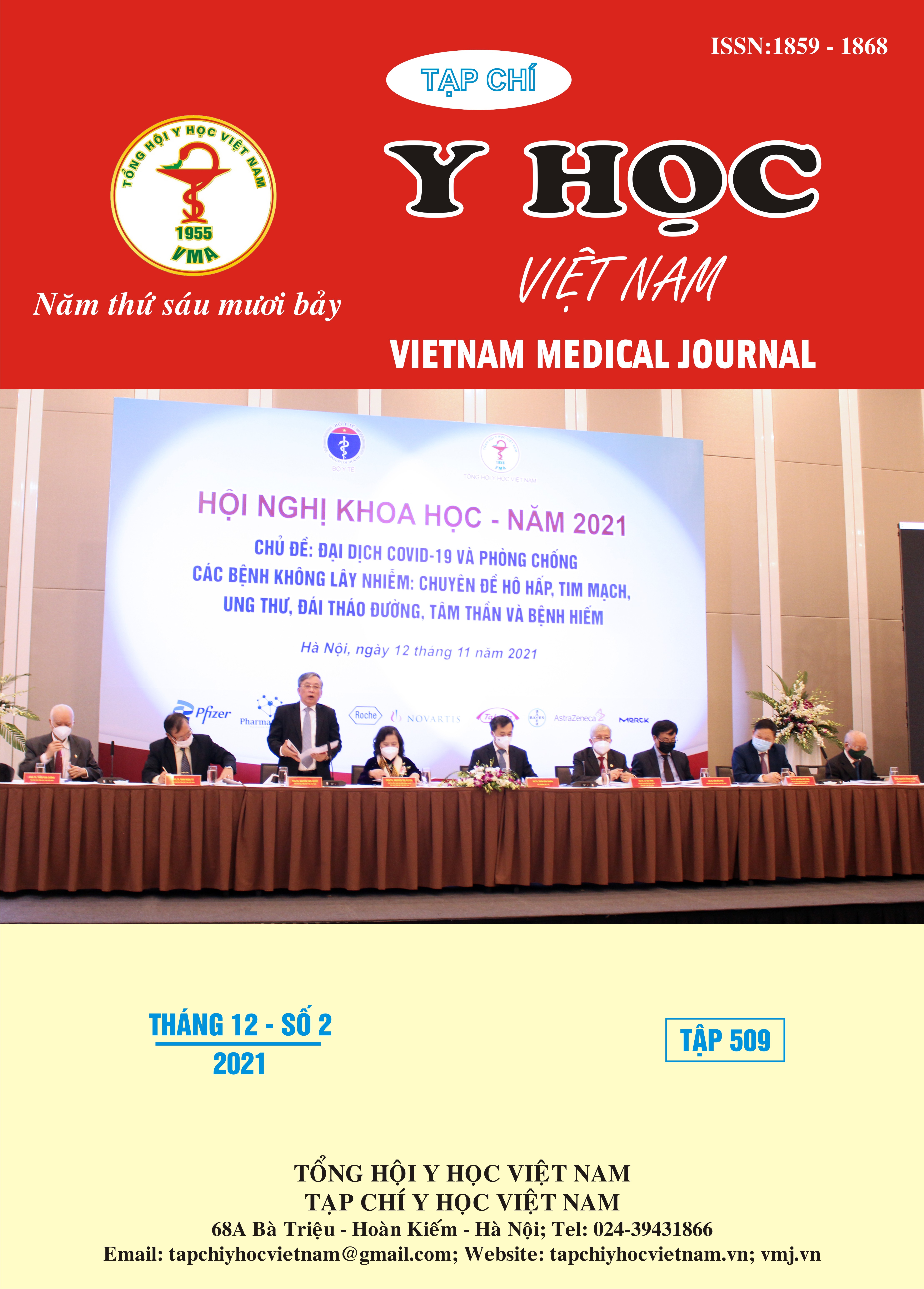THE TOTAL LUNG CAPACITY AMONG WORKERS EXPOSED TO SILICA DUST IN THE WORKPLACE AND RELATED FACTORS
Main Article Content
Abstract
This descriptive study aims to examine the changes in total lung capacity of workers who are directly exposed to silica in the workplace and related factors. Before measuring the respiratory function and total lung capacity (TLC), 869 workers in the environment exposed to silica dust had taken chest x-rays to diagnose silicosis. The results show that: TLC reduction rate is 10.5% (91/869); there is a close relationship between having large cloud silicosis with TLC decline (p<0.001); no association between small nodular silicosis and TLC decline (p>0.05); There is a close relationship between the FVC reduction and TLC reduction (p<0.001). It is recommended to continue to use common techniques and indicators of respiratory function such as FVC to assess limited respiratory function decline, in case high accuracy is required, the high technical index TLC should be used.
Article Details
Keywords
Total lung capacity, respiratory function
References
2. GL Ruppel. What is the clinical value of lung volumes? Respiratory care. Jan 2012;57(1):26-35; discussion 35-8. doi:10.4187/respcare.01374
3. Khương Văn Duy. Bệnh bụi phổi silic (Silicosis) nghề nghiệp. Bệnh nghề nghiệp - Giáo trình đào tạo sau đại học. Nhà xuất bản Y học: Đại học Y Hà Nội; 2017. 64-81
4. Goto A, Nawata S. [Clinical analysis of 130 cases of Siberian silicosis]. Nihon Igaku Hoshasen Gakkai Zasshi. 1995;55(3):121-128.
5. Trịnh Hồng Lân, Huỳnh Thanh Hà. Khảo sát tình hình bệnh nhiễm bụi phổi silic nghề nghiệp tại một số cơ sở sản xuất vật liệu xây dựng thuộc công ty xây dựng Dĩ An - Bình Dương. Tạp chí Y học TP Hồ Chí Minh. 2008;12(4):trang 240-246.
6. Lưu Phương Lan. Đặc điểm lâm sàng, cận lâm sàng và chức năng thông khí phổi ở bệnh nhân xơ cứng bì hệ thống. Luận án tiến sĩ y học, Đại học Y Hà Nội. 2015;
7. Guarnieri G, Mauro S, Lucernoni P, et al. Silicosis in finishing workers in quartz conglomerates processing. Med Lav. 2020;111(2):99-106. doi:10.23749/ mdl.v111i2.9115


